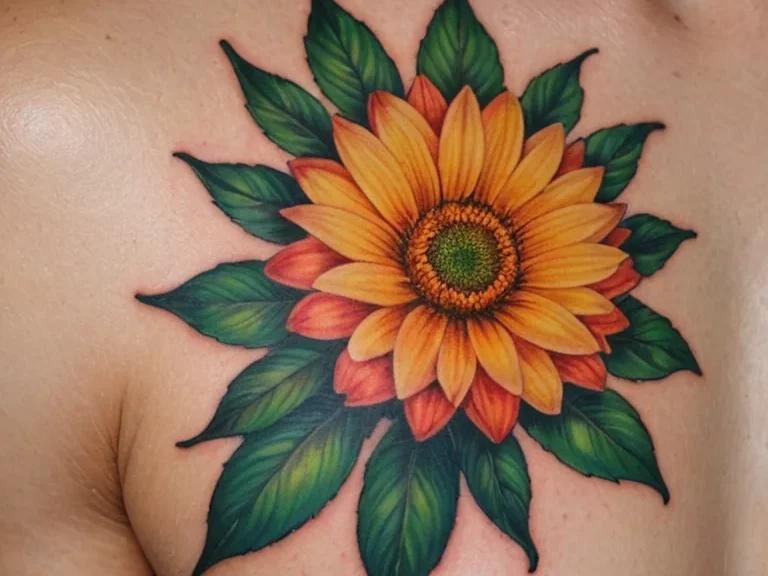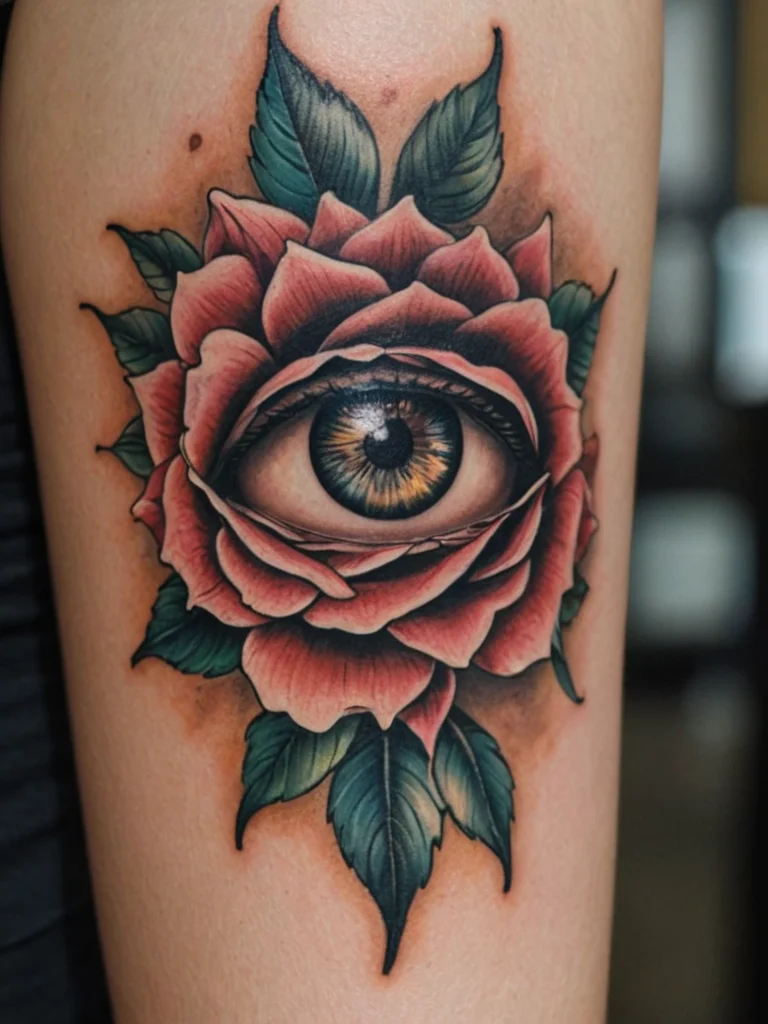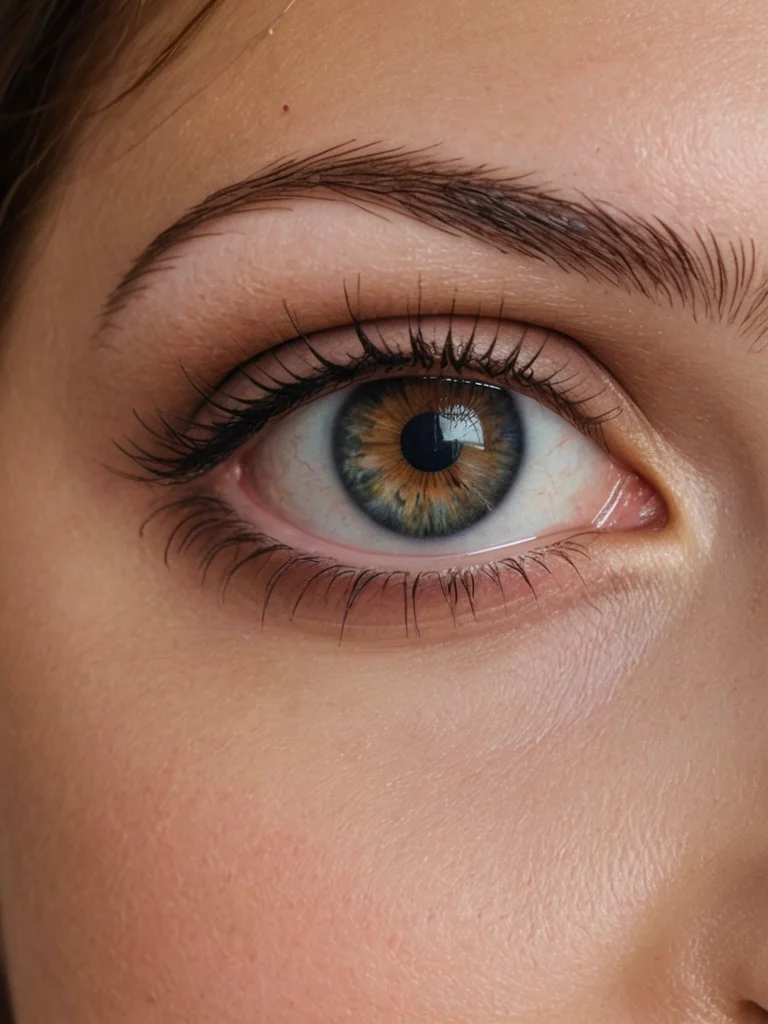In the expansive and vibrant world of tattoo culture, where personal expression meets permanent art, the longevity and pristine condition of your body art are paramount. As tattoo enthusiasts, you invest not only financially but also emotionally in each piece, recognizing it as an integral part of your story and identity. Therefore, maintaining the crispness, vibrancy, and overall integrity of your tattoos becomes a crucial aspect of your ongoing skin care regimen. However, with the constant evolution of aesthetic skin treatments, new questions frequently arise regarding their compatibility with tattooed skin. One such question that regularly surfaces in discussions among those with body art is whether popular skin rejuvenation techniques like microneedling or dermarolling can be safely performed over tattooed areas. These treatments, celebrated for their ability to stimulate collagen production and improve skin texture, naturally pique the interest of anyone seeking to maintain youthful, healthy skin. Yet, the interaction between these procedures and the intricate network of ink embedded within your dermis is far more complex than it might initially appear, carrying significant implications for the appearance and preservation of your beloved tattoos.
Is it safe? Microneedling & dermarolling on tattooed skin explained

The immediate and concise answer to whether it is safe to perform microneedling or dermarolling directly over a tattooed area is generally a resounding no. While these procedures are highly effective for improving skin texture, reducing scars, and promoting collagen synthesis on unblemished skin, their fundamental mechanism poses a direct threat to the permanence and visual quality of a tattoo. Imagine your tattoo as an intricately painted mural on a carefully prepared canvas; microneedling, in this analogy, is akin to deliberately perforating and agitating that canvas with thousands of tiny needles. The objective of microneedling is to induce controlled micro-injuries to the skin, thereby triggering the body’s natural wound-healing response, which includes the production of new collagen and elastin. This process is beneficial for skin rejuvenation because it helps to resurface the skin, minimize pores, and reduce the appearance of fine lines and scars.
However, when this process is applied to tattooed skin, the very mechanism designed to rejuvenate the skin can inadvertently compromise the tattoo. Tattoos reside within the dermis, the layer of skin beneath the epidermis, where ink particles are encapsulated by immune cells, primarily macrophages, preventing them from dispersing throughout the body. These ink particles are deliberately placed at a specific depth and concentration to create the desired design. Microneedling involves hundreds, if not thousands, of microscopic punctures that penetrate through the epidermis and into the upper layers of the dermis, precisely where tattoo ink is situated. This direct physical interaction with the ink, combined with the subsequent immune response and accelerated cellular turnover, can lead to undesirable and often irreversible changes to your tattoo.
The risk extends beyond just the physical disruption. The body’s healing process, once initiated by the micro-injuries, involves a complex cascade of cellular activities. This includes the recruitment of more macrophages to the site, not only to clear cellular debris from the induced trauma but also, potentially, to interact with the tattoo ink. Macrophages are the very cells responsible for containing tattoo ink in the first place, and an increase in their activity in the area can lead to them attempting to clear or redistribute the ink, much like they would during a laser tattoo removal session, albeit in a less controlled and predictable manner. Therefore, while the intention of microneedling is to improve skin health, when applied over a tattoo, it essentially mimics a rudimentary and uncontrolled form of tattoo fading or removal, putting your cherished artwork at significant risk of damage.
Understanding the tools: How microneedling & dermarolling interact with tattoo ink

To fully grasp why microneedling and dermarolling are generally incompatible with tattooed skin, it’s essential to delve deeper into the mechanics of these tools and the physiological responses they provoke. Microneedling, whether performed professionally with a motorized pen or at home with a manual dermaroller, involves the creation of controlled micro-punctures in the skin. Professional microneedling devices allow for precise control over needle depth, ranging from superficial epidermal treatments (0.25mm) to deeper dermal penetration (up to 2.5mm or more, though often limited to 1.5mm for most facial treatments). Dermarollers, on the other hand, typically have fixed needle lengths and rely on manual pressure, making their depth and consistency of penetration less predictable and often more variable.
Regardless of the specific device, the objective is the same: to create microscopic channels in the skin. These channels are perceived by the body as tiny wounds, initiating a wound-healing cascade. This cascade involves three primary phases: inflammation, proliferation, and remodeling. During the inflammatory phase, blood flow increases, and immune cells, including macrophages, rush to the site to clean up cellular debris. In the proliferation phase, fibroblasts are stimulated to produce new collagen and elastin, scaffolding that improves skin structure. Finally, in the remodeling phase, this new collagen matures and strengthens, leading to improved skin texture and firmness.
Now, let’s consider the tattoo ink. Tattoo ink is purposefully deposited into the dermis, a layer of connective tissue rich in collagen, elastin, and various cell types, including fibroblasts and macrophages. The ink particles are too large for the body to completely eliminate, so they become encapsulated by fibroblasts and, primarily, by macrophages, which essentially ‘trap’ the pigment in place, making the tattoo permanent. When microneedling needles penetrate the dermis, they directly interact with these encapsulated ink particles and the cells holding them. This interaction can manifest in several detrimental ways.
Firstly, the physical trauma from the needles can literally disrupt the integrity of the ink capsules. While the needles are tiny, thousands of such disruptions can begin to loosen the once-stable ink particles. Secondly, the subsequent inflammatory response, which brings an influx of macrophages to the area, can lead to these immune cells attempting to clear or disperse the now-disrupted ink. This is a similar, albeit less targeted, process to what occurs during laser tattoo removal, where laser energy shatters ink particles, making them small enough for macrophages to carry away. In the case of microneedling, the trauma itself initiates a less efficient but still effective ink-clearing process.
Thirdly, the accelerated cell turnover and collagen remodeling induced by microneedling can further contribute to ink degradation. As new skin cells are generated and old ones shed, and as the dermal matrix undergoes significant restructuring, the ink particles may be pushed closer to the surface or simply become less densely concentrated within the renewed dermal layers. This phenomenon can lead to noticeable fading and a dulling of the tattoo’s original vibrancy. The depth of the needles is a critical factor; even shallow dermarolling (0.5mm) can impact the upper dermis where ink often resides, while deeper treatments (1.0mm+) are almost guaranteed to interfere directly with the ink, increasing the risk of adverse outcomes. Therefore, the very process designed to renew skin on an untreated surface becomes a significant threat to the permanence and clarity of your intricate tattoo designs.
Protecting your art: The proven risks of microneedling on tattoos (fading, blurring, distortion)

For individuals who cherish their body art, understanding the specific risks associated with microneedling or dermarolling over tattooed areas is crucial. These aren’t just theoretical concerns; they are well-documented outcomes that can significantly diminish the aesthetic value and longevity of your tattoos. The primary risks generally fall into categories of fading, blurring, and distortion, each representing a distinct form of damage to the intricate artwork embedded in your skin.
Fading and dullness: The slow erosion of vibrancy
The most common and arguably the most disheartening risk of microneedling over tattoos is the accelerated fading and dulling of the ink. Tattoos naturally fade over decades due to sun exposure, the body’s immune system slowly breaking down ink particles, and the natural aging process of the skin. However, microneedling drastically speeds up this process. As discussed, the microscopic needles physically disrupt the ink particles encapsulated within the dermis. This physical trauma, combined with the subsequent inflammatory response, signals the immune system to ramp up its activity in the area. Macrophages, the white blood cells responsible for engulfing and containing foreign particles like tattoo ink, become highly active, attempting to clear away the disrupted ink. This immune response, while part of the healing process, effectively acts as a rudimentary, uncontrolled tattoo removal mechanism. The ink particles that were once stable and densely packed become fragmented and less concentrated, leading to a noticeable reduction in the tattoo’s saturation and vibrancy. Colors that once popped may appear washed out, and intricate details can become less defined. This fading can be gradual, appearing over weeks or months after a session, or it can be immediate and severe, depending on the depth of penetration and the individual’s skin response.
Blurring and spreading: Losing the sharp edges
Another significant risk is the blurring or spreading of the tattoo lines and details. Tattoos are celebrated for their crisp lines, sharp edges, and precise shading. Microneedling, by creating thousands of tiny channels through the skin, can inadvertently provide pathways for the ink particles to migrate from their original, intended location. Imagine a finely drawn sketch where the ink suddenly begins to bleed into the surrounding paper; this is analogous to what can happen with tattoo ink. Fine lines, intricate script, and delicate shading are particularly vulnerable. The pressure from the dermaroller or the repeated punctures from a microneedling pen can push ink particles slightly beyond their original boundaries, leading to a ‘blown out’ or blurred appearance. This effect is often irreversible, as once the ink has migrated and settled in a new, unintended pattern, it cannot easily be corralled back into place. The result is a loss of definition, making the tattoo look less professional and less appealing than its original state.
Distortion and scarring: A textured transformation
Perhaps the most severe and visually damaging consequence is the potential for distortion of the tattoo’s design due to scarring or uneven healing. While professional microneedling aims to induce controlled micro-injuries, any skin trauma carries a risk of scarring, especially if proper aftercare is not followed, if the device is used improperly (e.g., too much pressure, unsterile conditions), or if the individual is prone to keloid or hypertrophic scarring. When scarring occurs over a tattoo, the texture of the skin changes, becoming raised, bumpy, or uneven. This altered texture directly impacts how light reflects off the tattoo, making the design appear warped or uneven. A perfectly smooth tattoo suddenly looks rippled or distorted. Moreover, uneven healing can lead to patches of hyperpigmentation (darker skin) or hypopigmentation (lighter skin) within the tattooed area, further compromising the tattoo’s visual integrity and making it appear mottled or damaged. In extreme cases, significant scarring can permanently alter the contours of the design, rendering it unrecognizable or significantly defaced. These forms of damage are not only aesthetically displeasing but can also be incredibly challenging, if not impossible, to correct, even with subsequent tattoo rework or laser treatments.
Beyond these primary concerns, there are also risks of infection, especially with at-home dermarolling where sterilization protocols are often inadequate, or if the skin is not properly prepared. An infection can lead to inflammation, pus formation, and potentially further ink migration or scarring, compounding the damage. Furthermore, some individuals may experience allergic reactions to the ink being disturbed, or an exacerbation of pre-existing skin conditions in the area. Therefore, the collective wisdom of tattoo artists and dermatologists alike is to steer clear of microneedling and dermarolling directly on any tattooed skin, safeguarding your art from these detrimental and often permanent effects.
Expert recommendations: Safe skin care strategies & tattoo-friendly rejuvenation alternatives

Given the significant risks associated with microneedling and dermarolling on tattooed skin, it becomes imperative for tattoo enthusiasts to adopt safe, tattoo-friendly skincare strategies and explore alternative rejuvenation methods that do not jeopardize their body art. The overarching goal is to maintain vibrant, healthy skin around and through your tattoos without compromising the integrity of the ink. Here, expert recommendations prioritize preservation and gentle care.
Foundational tattoo aftercare for lifelong vibrancy
Before exploring advanced treatments, it’s essential to master the fundamentals of tattoo care. These practices form the bedrock of tattoo longevity:
- Sun protection: This is arguably the most critical aspect of long-term tattoo preservation. UV radiation from the sun breaks down tattoo ink, leading to premature fading and dullness. Always apply a broad-spectrum sunscreen with an SPF of 30 or higher (ideally 50+) to tattooed areas, even on cloudy days. Reapply every two hours when exposed to direct sunlight. Consider wearing UV-protective clothing for extensive outdoor activities.
- Consistent moisturization: Well-hydrated skin appears healthier and can help your tattoos look more vibrant and less faded. Use a fragrance-free, hypoallergenic moisturizer daily to keep the skin supple and prevent dryness, which can make tattoos appear dull or flaky.
- Gentle cleansing: Use a mild, pH-balanced cleanser to wash tattooed skin. Avoid harsh soaps or abrasive scrubs that can irritate the skin or strip away natural oils.
- Avoid scratching and picking: Resist the urge to scratch or pick at flaking skin during healing or if experiencing dryness, as this can damage the ink or lead to scarring.
Safe skincare practices for general skin health around tattoos
Beyond the basics, certain skincare ingredients can be incorporated with caution around tattoos:
- Hydrating ingredients: Hyaluronic acid, ceramides, and glycerin are excellent for drawing and retaining moisture in the skin, contributing to a healthy, plump appearance that can enhance tattoo visibility.
- Antioxidants: Ingredients like Vitamin C, Vitamin E, and ferulic acid help protect the skin from environmental damage and free radicals, which can contribute to premature aging and potentially dullness. These are generally safe for use over tattoos.
- Gentle chemical exfoliants (with extreme caution): While mechanical exfoliation (physical scrubs) is generally discouraged over tattoos due to the risk of micro-abrasions and irritation, very low concentrations of AHAs (alpha hydroxy acids like lactic or glycolic acid) or BHAs (beta hydroxy acids like salicylic acid) can be used around tattoos to improve texture and tone. However, apply them very sparingly and never on fresh tattoos. Always patch test a small, inconspicuous area first, and if you have any doubts, consult a dermatologist. The primary concern is accelerating cell turnover too rapidly directly over the ink.
- Retinoids (use with professional guidance and extreme caution): Retinoids (retinol, tretinoin) are powerful ingredients known for their anti-aging and skin-renewing properties. They significantly increase cell turnover. While beneficial for aging skin, this accelerated turnover can potentially impact tattoo ink over time by pushing pigment closer to the surface, leading to gradual fading. Many dermatologists recommend avoiding retinoids directly on tattoos, or using them only after careful consideration and under professional guidance, especially if fading is a major concern.
Tattoo-friendly rejuvenation alternatives
For those seeking more advanced skin rejuvenation without risking their tattoos, several alternatives are generally considered safer and should always be performed by a qualified professional with experience treating tattooed skin:
- LED light therapy: Light Emitting Diode (LED) therapy uses different wavelengths of light to penetrate the skin at various depths. Red light is known for stimulating collagen production and reducing inflammation, while blue light targets acne-causing bacteria. LED therapy is non-invasive, does not physically traumatize the skin or ink, and is widely considered safe and beneficial for overall skin health and healing, making it an excellent option for tattooed individuals.
- Radiofrequency (RF) treatments: RF energy heats the deeper layers of the skin without damaging the surface, stimulating collagen and elastin production. This leads to skin tightening and improved texture. Because it does not involve needles or significant physical disruption of the dermis where ink resides, RF treatments are generally considered safe for use over tattoos, though it’s always wise to inform your practitioner about your tattoos and ensure they have relevant experience.
- Superficial chemical peels (with extreme caution and expert supervision): Very light, superficial chemical peels (e.g., glycolic or lactic acid peels at low concentrations) that primarily affect the epidermis can be used to improve skin tone and texture. However, these must be approached with extreme caution, performed by an experienced professional who understands tattoo ink, and never applied to freshly tattooed or sensitive areas. The risk of accelerating ink fading is still present, so extensive consultation and patch testing are absolutely mandatory.
- HydraFacial and similar gentle facial treatments: These multi-step treatments typically involve cleansing, exfoliation (often gentle chemical or vortex fusion), extractions, and hydration using serums infused into the skin. As long as aggressive physical exfoliation or strong acids are avoided directly over the tattoo, these treatments can be a safe way to keep tattooed skin clean, hydrated, and refreshed without posing a risk to the ink.
- Non-ablative laser treatments (highly specialized): Certain non-ablative lasers (e.g., specific settings of Fraxel Restore or PicoSure that are not designed for tattoo removal) might be used for skin texture improvement in areas adjacent to tattoos or for very specific skin concerns, but this requires an exceptionally skilled practitioner who has a deep understanding of laser-skin interaction and tattoo ink. Using any laser over a tattoo without explicit intent for removal carries inherent risks of ink alteration, so this is a highly specialized area and not a general recommendation for tattoo enthusiasts.
Ultimately, the key to safe skin rejuvenation with tattoos is informed caution and professional consultation. Never hesitate to discuss your tattoos with any aesthetician or dermatologist before undergoing a new procedure. Their expertise will guide you towards treatments that enhance your skin’s health without compromising your cherished body art.
Your tattooed skin guide: Summary & when to talk to a pro
Navigating the complex landscape of skincare while preserving the integrity of your tattoos requires a nuanced understanding and a commitment to informed choices. As we’ve thoroughly explored, the powerful skin rejuvenation techniques of microneedling and dermarolling, while highly effective for treating various skin concerns on un-tattooed areas, pose significant and often irreversible risks when applied directly over body art. The mechanical action of these devices, coupled with the body’s natural wound-healing response, can directly interfere with the tattoo ink encapsulated within the dermis, leading to a cascade of undesirable outcomes.
Summary of risks and best practices:
To reiterate the core message, attempting microneedling or dermarolling over a tattoo is generally not recommended due to the high probability of:
- Fading and dullness: The most prevalent outcome, where your tattoo’s vibrant colors and crisp lines lose their intensity and appear washed out. This is driven by the physical disruption of ink particles and increased immune activity.
- Blurring and spreading: The delicate details of your tattoo, especially fine lines and intricate shading, can become distorted as ink particles migrate from their original placement, resulting in a ‘blown out’ or fuzzy appearance.
- Distortion and scarring: Uneven healing or the formation of hypertrophic or keloid scars can permanently alter the texture of the skin over your tattoo, causing the design to look warped, bumpy, or uneven. Pigment changes (hypo/hyperpigmentation) can also occur.
- Increased risk of infection: Especially with at-home devices, improper sterilization can lead to infections that not only harm your skin but can further damage the tattoo.
Instead of risking your irreplaceable artwork, the focus should always be on proactive and protective skin care. Consistent sun protection with high SPF, daily moisturization, and gentle cleansing are the pillars of preserving your tattoo’s vibrancy and your skin’s health. When considering advanced treatments, prioritize methods that work with, rather than against, the permanence of your ink.
When to talk to a professional:
The journey of maintaining beautiful, tattooed skin is a lifelong endeavor, and expert guidance is invaluable. You should always consult with a qualified professional in several key scenarios:
- Before starting any new aesthetic skin treatment: If you are considering any form of skin rejuvenation, whether it’s for anti-aging, acne scars, or texture improvement, always disclose all your tattoos to your dermatologist or licensed aesthetician. A reputable professional will assess your tattoos’ location, age, and ink type, and recommend appropriate treatments that avoid or minimize risk to your body art.
- If you are concerned about tattoo fading or aging: Should you notice your tattoos beginning to fade, blur, or if the skin around them is showing signs of aging, consult a dermatologist. They can provide tailored advice on how to slow down natural aging processes or suggest safe, non-invasive treatments to improve overall skin health without harming the tattoo.
- For specific skin conditions near or on tattoos: If you develop any skin conditions such as eczema, psoriasis, or unusual growths within or near your tattooed areas, it is crucial to seek immediate medical attention from a dermatologist. They can provide diagnosis and treatment without compromising the tattoo.
- To understand tattoo-friendly alternatives: If you are keen on exploring skin rejuvenation but are unsure which methods are safe for your tattooed skin, a consultation with a dermatologist specializing in cosmetic dermatology is highly recommended. They can explain the nuances of options like LED light therapy, certain RF treatments, or very gentle peels, helping you make informed decisions that align with your goal of preserving your art.
- Choosing a tattoo artist for touch-ups or new work: While not directly related to skin treatments, remember that a skilled tattoo artist will also offer advice on long-term care for your tattoos. If considering touch-ups, ensure your artist understands how previous skin treatments might have affected your tattoo.
Your tattoos are more than just ink on skin; they are a cherished extension of yourself, a narrative etched in art. By adopting a cautious, informed, and proactive approach to skincare, and by collaborating with trusted professionals, you can ensure that your body art remains as vibrant and meaningful as the day it was created, a testament to enduring beauty and personal expression.